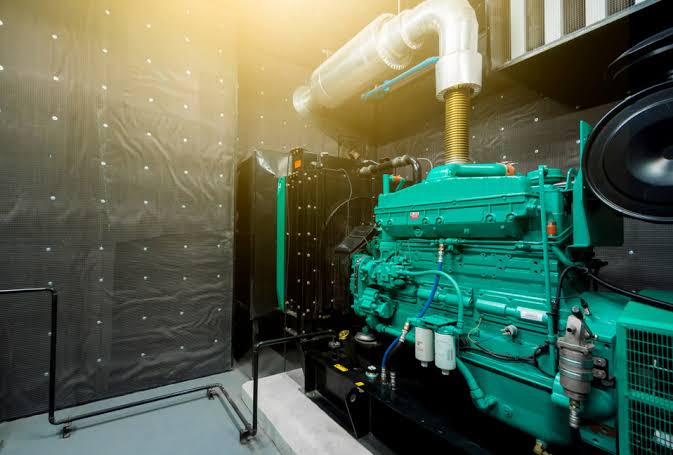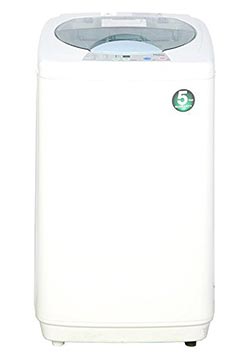6 Safety Tips For Working With Generators

These days, our whole lives are dependent on electricity. However, power outages are still a common problem. So, what do you do when the power goes out? Sit in the dark and hope for it to come back?
Of course not! If you’re wise, you’ll invest in a generator, and reap the benefits of a backup power source. Be it for a business or a home – a standby generator will always come in handy.

However, owning a generator also involves a bit of maintenance. And if you don’t handle it carefully, some pretty severe accidents may occur.
Don’t let this stop you though. Here are a few safety tips for generators that will help you enjoy unlimited electricity safely!
#1. Location Matters
The first rule of generator safety is to pick a place with good ventilation. The exhaust from the generator needs to be released, or high levels of carbon monoxide will start building up. This can be quite dangerous as it happens before you’ve even realized what’s going on.
So, keep the generator outdoors – avoid garages, basements and sheds. The ideal place would be to operate it at least 20 feet away from any vent, window or door. This way, the exhaust won’t find a way inside.
#2. Fuelling the Generator
Only fill the generator with fuel that’s been stored well and in airtight conditions. The gas you use to refill your generator should be fresh and stabilized. Although if you’re taking a hiatus from using the generator, make sure to add a fuel stabilizer. This will keep the leftover fuel in good condition.
Also, since gasoline and diesel are quite flammable, never refill these fuels when the engine is hot. Give the generator some time to cool off. For good quality generators, you can check out the link here: https://krugerpower.com.au/diesel-generators.html
Be wary of leaving fuel canisters lying around the generator as well, because you never know what might accidentally start a fire. And, of course, make sure the generator is off when you actually pour in the fuel.
#3. Avoid Wet Areas
We all know water and electricity is a recipe for disaster. So, unless you want to get electrocuted, keep your generator away from wet places. And yes, this includes snow.
The wise thing to do would be to place it on something above the ground, so there’s no direct contact. Keeping the generator covered, or placed under a shaded structure is a good idea.
You can buy waterproof canopies for your generator, so it stays protected from all sorts of weather. And, of course, before touching the generator, make sure your hands are dry.
Keep the area around the generator and the generator itself clean. Wipe away dust, sand and any water droplets you see. Ignoring small things like this can lead to unnecessary accidents.
#4. Beware of Carbon Monoxide Leaks
Carbon monoxide is really difficult to detect, which makes it all the more deadly. You can’t see or smell it – but the potential effects on your health are definitely something to worry about.
Usually, symptoms of carbon monoxide poisoning start with feeling dizzy and weak. Sometimes there might be fatigue, headaches and nausea as well. In such cases, it’s best to seek immediate medical help.
However, to prevent such scenarios from happening in the first place, you should consider installing carbon monoxide alarms. These are designed to detect abnormal levels of this poisonous gas before any human can.
Remember, it’s better to be safe than sorry! Investing in such an alarm system might be costly, but you’ll be at peace knowing that the people in your household are safe.
#5. Handling the Cords
If you’re using cords, make sure you get ones that are heavy duty and long. The cords should also have no cuts or tears. In case they’re going through a door or window, make sure the cords aren’t being pinched or damaged.
Damaged cords are a fire hazard. So, don’t take your chances and make sure all the cables are in good condition.
Extension cables should also always be properly unwound. Or else they might overheat and lead to a short circuit. Extension cords connected to a generator can pose a risk of electrocution for the user.
A simple solution to stay safe is to use an inlet box and transfer switch. This will isolate the electricity in the generator from the other household utility connections. So you won’t have to worry about the issue of “backfeeding” power into the lines, which is hazardous.
#6. Inspect Regularly
Always check your generator regularly for problems. The smallest issues like a crack in the wires might turn into something massive. Check out everything, starting from the air filter to the spark plug.
The best advice on taking care of a generator lies in the instruction manual. This comes from the manufacturer itself and will provide the most accurate maintenance schedule. It also involves all sorts of relevant information on servicing, time intervals and safety tips.
During the winter, if there is an off phase of generator use, make sure you run it for at least 20 minutes every month. This will get rid of any unnecessary moisture and keep the different parts lubricated.
Final Thoughts
Be it a business or a home, generators come in handy for several reasons. However, they can also be quite hazardous. Electric shocks, carbon monoxide poisoning and burns from generators are not uncommon.
But when has the downsides of technology ever stopped us from improving our living standards? When you can avoid all these dangers by simply being a little mindful, you’ll realize that the advantages far outweigh the risks.
So go buy that generator, and read the instruction manual properly!




